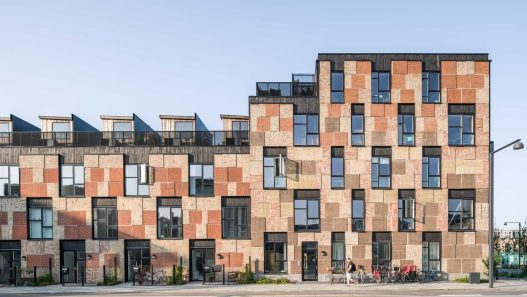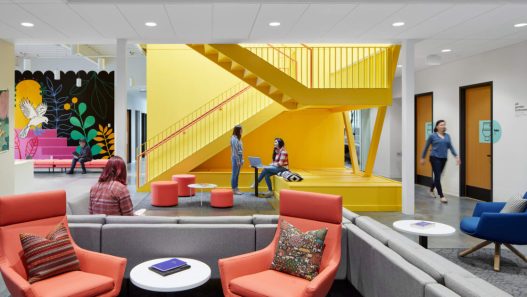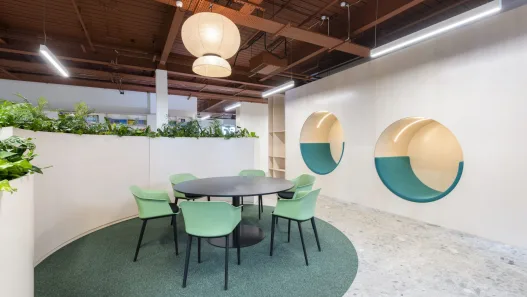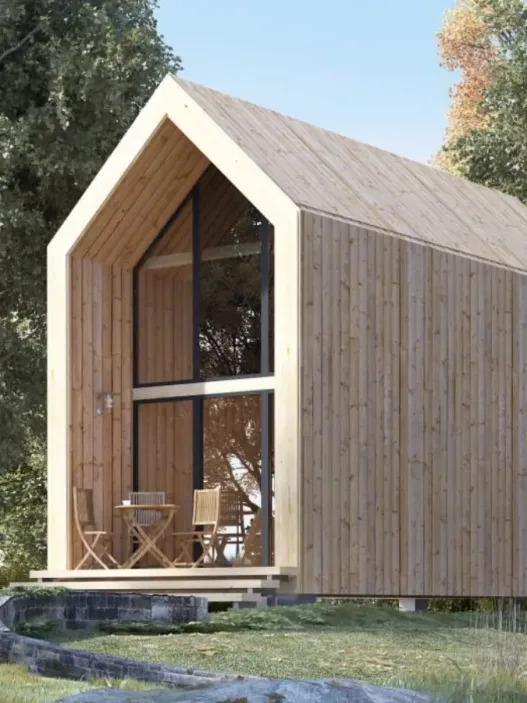Cork flooring has attracted attention in recent years due to its unique properties and benefits. Derived from the bark of cork oak trees, this natural material not only offers aesthetic appeal, but also brings a variety of practical advantages to residential and commercial spaces. The combination of durability, comfort and sustainability make cork an exceptional choice for flooring. In this research, we will explore what cork flooring is, its historical significance, benefits, environmental considerations and the latest innovations in design.
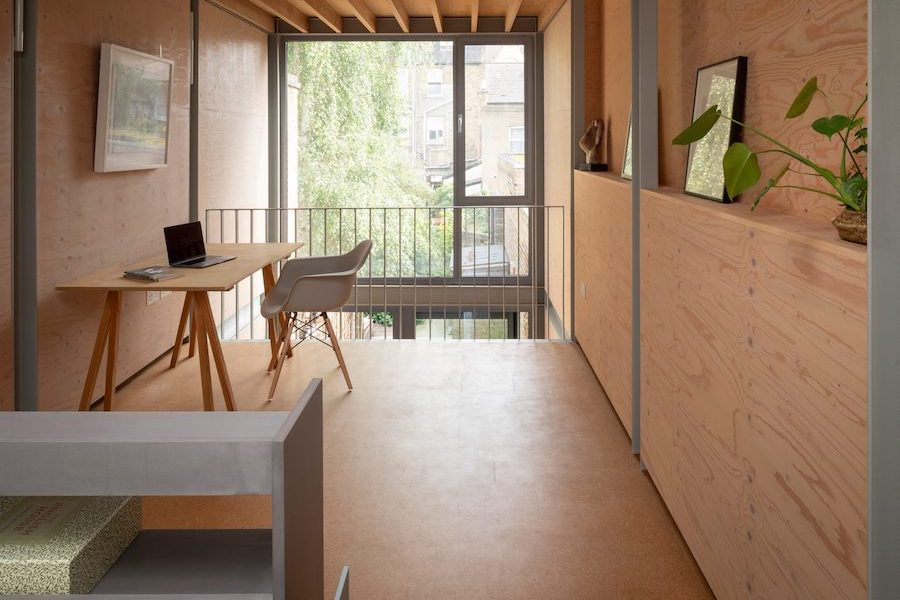
What is Cork Flooring?
Cork flooring is made from the bark of cork oak trees, found mainly in Mediterranean regions. The harvesting process is unique; the bark is stripped from the tree without damaging it, allowing it to regenerate every nine years. This extraordinary property makes cork a renewable resource. Once harvested, the cork bark is processed into tiles or slabs that can be laid in homes and businesses.
Cork flooring is known for its distinctive texture and warm, earthy tones. It has a unique cellular structure filled with air pockets, which not only provides comfort underfoot, but also excellent insulating properties. This natural material can be found in a variety of finishes and styles, making it versatile enough to suit both modern and traditional design aesthetics.
History of Cork Use in Architecture
The use of cork dates back thousands of years. Ancient civilizations recognized the properties of cork and used it for various purposes, such as waterproofing boats and stoppers for wine bottles. However, its use as a flooring material only gained popularity in the early 20th century.
In the late 1800s and early 1900s, cork flooring began to appear in homes and public buildings, renowned for its durability and sound-absorbing qualities. Notable architects and designers embraced cork for its aesthetic appeal and functionality. As the industrial revolution progressed, cork flooring became widely produced and accessible to a wider audience. For decades, cork has remained a symbol of sustainable design, adapting to changing trends and technologies while maintaining its relevance in architecture.
Benefits of Cork as a Flooring Material
One of the highlights of cork flooring is its comfort. The natural cushioning provided by the air-filled cells soothes the feet, which is especially beneficial in areas where people stand for long periods of time. Furthermore, cork is an excellent insulator, helping to regulate temperature and reduce energy costs.
Another important advantage is the sound dampening properties of cork. It absorbs sound, making it an ideal choice for apartments or houses where noise reduction is a priority. Furthermore, cork is naturally resistant to mold, mildew and pests, contributing to a healthier indoor environment.
Cork flooring is also easy to maintain. Regular sweeping and occasional damp mopping is usually enough to keep it looking good. With proper care, cork floors can last for decades, making them a cost-effective investment in the long run.
Environmental Impact of Cork Production
Cork is often considered an environmentally friendly flooring option. The harvesting process is sustainable; instead of felling the tree, we remove the bark, allowing for continued growth and carbon sequestration. Cork oak forests also provide vital habitats for a variety of wildlife species.
In addition, cork production supports local economies in areas where cork oaks thrive. These forests are often protected by traditional practices, contributing to biodiversity and protecting landscapes from degradation.
The biodegradability of cork further enhances its sustainability profile. When it reaches the end of its useful life, cork flooring can decompose naturally and return nutrients back to the soil. This closed sustainability loop is becoming increasingly important in an era focused on reducing waste and promoting environmentally friendly building materials.
Innovations in Cork Floor Design
In recent years, the world of cork flooring has seen exciting innovations. Manufacturers are experimenting with new technologies to improve durability and design options. Advances in surface treatments have made cork more resistant to scratches and stains, improving its performance in high traffic areas.
In addition, the aesthetic possibilities have expanded considerably. Cork is now available in a variety of colors, patterns and textures, allowing homeowners and designers to create unique spaces. From sleek, modern designs to rustic, natural looks, cork can be adapted to suit any style.
Furthermore, the rise of digital printing technology enables intricate designs to be printed directly onto cork surfaces, opening up endless creative possibilities. This innovation not only transforms the visual appeal of cork flooring, but also confirms its position as a modern and stylish choice in contemporary architecture.
As a result, cork flooring stands out as a versatile, sustainable and attractive option for both residential and commercial spaces. Its rich history and ongoing innovations ensure that cork remains a current and attractive option in the world of architecture and design.
Sustainability Aspects of Cork Flooring
Cork flooring has gained popularity not only for its aesthetic appeal, but also for its remarkable sustainability features. Understanding the sustainability aspects of cork flooring becomes crucial when trying to meet the challenges of environmental protection. Derived from the bark of cork oak trees, this natural material offers a unique blend of beauty and environmental friendliness. In this research, we will examine various dimensions of the sustainability of cork flooring, including renewable resource attributes, life cycle analysis, harvesting practices, energy efficiency and relevant certifications.
Renewable Resource Characteristics
Cork flooring stands out as a renewable resource because it is harvested from cork oak trees without harming the trees themselves. These trees have the remarkable ability to regenerate their bark, which is harvested approximately every nine years. This method of harvesting allows the trees to continue to thrive and contribute to the reduction of greenhouse gases by absorbing carbon dioxide from the atmosphere.
Cork oak forests, known as Montados, are also biodiversity hotspots that support a variety of wildlife species, including endangered birds and insects. This symbiotic relationship between cork harvesting and biodiversity conservation highlights the role of cork flooring in supporting ecological balance. So, cork is not only a flooring option, but also a renewable resource that supports both the environment and local economies.
Life Cycle Analysis of Cork Flooring
Life cycle analysis (LCA) of cork flooring examines its environmental impact from production to disposal. This process includes assessing the extraction of raw materials, production processes, transportation, use and final disposal or recycling. Cork flooring has a relatively low carbon footprint compared to many synthetic flooring materials.
Cork requires minimal energy during its production and the manufacturing process produces very little waste. When cork flooring is installed, it offers insulation benefits, contributing to energy savings in homes and buildings. Moreover, cork is biodegradable at the end of its life. It can be composted or recycled into new products, further minimizing its environmental impact. This comprehensive life cycle analysis underlines the sustainability features of cork flooring, making it a smart choice for environmentally conscious consumers.
Cork Harvesting Applications
Mushroom harvesting practices are crucial to ensuring the sustainability of this resource. Skilled workers, known as “mushroomers”, perform the delicate task of peeling the bark from the tree in a way that does not damage it. This is usually done by hand, ensuring precision and care. Such traditional techniques have been passed down through generations, emphasizing the importance of human skill in sustainable practices.
Mushroom harvesting not only supports trees, but also provides economic benefits to local communities. The cork industry provides jobs and sustains livelihoods, especially in regions such as Portugal, the world’s largest cork producer. By protecting cork oak forests and promoting responsible harvesting, these communities play an important role in conserving biodiversity and combating climate change.
Energy Efficiency in Cork Flooring
Cork flooring is renowned for its natural insulating properties. Its cellular structure contains millions of air-filled pockets that provide excellent thermal insulation and sound absorption. This means that homes with cork floors can maintain comfortable temperatures, reducing the need for heating and cooling systems.
Cork flooring improves energy efficiency, contributing to lower energy bills and a smaller carbon footprint. Furthermore, the acoustic benefits of cork make it an ideal choice for areas where noise reduction is a priority, such as schools, offices and homes. Thus, cork flooring not only increases comfort, but also promotes energy savings, perfectly in line with sustainable living practices.
Sustainability Certificates and Standards
Various certifications and standards exist to ensure that cork flooring meets certain sustainability criteria. Organizations such as the Forest Stewardship Council (FSC) and the Sustainable Forestry Initiative (SFI) provide guidelines that ensure cork is sourced from responsibly managed forests. These certifications help consumers make informed choices and guarantee that the cork flooring they purchase supports sustainable practices.
In addition, many cork products are free of harmful chemicals and emissions and are often certified by the GREENGUARD Environmental Institute. This means that cork flooring contributes to healthier indoor air quality, making it a safe choice for both homes and workplaces.
In conclusion, the sustainability aspects of cork flooring are multifaceted and intriguing. From renewable resource attributes to life cycle analysis, harvesting practices, energy efficiency and certifications, cork flooring is emerging as a responsible choice for environmentally conscious consumers. By choosing cork, individuals not only beautify their living spaces, but also make a positive contribution to the planet.
Aesthetic Features of Cork Flooring
Cork flooring is often renowned not only for its sustainability and functionality, but also for its unique aesthetic qualities. As a natural material derived from the bark of cork oak trees, it offers a warm and inviting look that can enhance a variety of interior designs. The aesthetic appeal of cork flooring lies in its color, texture and versatility, making it a popular choice for homeowners and designers alike.
Color and Texture Variations
One of the most fascinating aspects of cork flooring is its rich palette of colors and textures. Cork naturally has a range of earthy tones, from warm browns and bronzes to lighter shades of beige. This diversity allows it to blend seamlessly into different environments, whether you’re aiming for a rustic farmhouse feel or a sleek, modern look.
The texture of cork is another standout feature. Its surface can be naturally smooth or slightly textured, providing a tactile element that enhances the sensory experience of a space. Furthermore, cork can be treated or painted to achieve different finishes, allowing for creative expression. Some manufacturers even offer printed designs that mimic the look of wood or stone, ensuring the appeal of these materials while maintaining the eco-friendly advantages of cork.
Cork Flooring Design Trends
In recent years, there has been a resurgence in the popularity of cork flooring, with an increased emphasis on sustainability and natural materials in design. Current trends showcase cork as a versatile flooring option that pairs beautifully with minimalist aesthetics. Open-concept spaces benefit from cork’s ability to create a cohesive look while providing warmth and comfort underfoot.
What’s more, cork is increasingly being used in combination with bolder colors and patterns. Designers are experimenting with cork tiles in vibrant hues or incorporating geometric patterns into flooring layouts. This playful approach allows homeowners to express their individuality and make a statement in their interior.
Integration with Other Materials
Cork flooring stands out for its ability to integrate harmoniously with other materials. It pairs beautifully with wood, creating a warm and harmonious environment that feels both inviting and stylish. In contemporary designs, cork often complements sleek materials such as metal and glass, providing a soft contrast that enhances the overall aesthetic.
Cork is also a popular choice in spaces where soundproofing is important, such as offices or home theaters. When combined with carpets or acoustic panels, cork flooring contributes to a quieter, more serene atmosphere. This versatility means that cork can adapt to a variety of design goals, whether as a subtle backdrop or a prominent feature.
Cork Flooring in Different Architectural Styles
Cork flooring is remarkably adaptable, blending beautifully into a variety of architectural styles. In traditional homes, it can add a touch of warmth and nostalgia, mirroring the natural materials often found in classic designs. Its organic texture and colors blend well with rustic and country styles, making it a popular choice for kitchens and living spaces.
In turn, cork also shines in modern architecture. Its clean lines and minimalist appeal make it an ideal companion for contemporary spaces that prioritize simplicity and functionality. Whether in a stylish city apartment or a spacious loft, cork flooring can enhance the overall design while maintaining a feeling of warmth and comfort.
Examples of Cork Flooring in Modern Homes
Many modern homes showcase the beauty and versatility of cork flooring, demonstrating its aesthetic qualities in real-world applications. A contemporary home in California is a notable example of cork being used in open living spaces. The warm tones of cork contrast beautifully with the sleek white walls and stainless steel appliances, creating a balanced and inviting atmosphere.
In another case study, in a renovated loft in New York, the designers chose large cork tiles in a dark brown color. This choice not only adds warmth to the industrial space, but also provides excellent sound insulation, increasing the comfort of the home. The integration of cork with exposed brick walls and metal fixtures created a harmonious blend of modern and rustic elements, showcasing the versatility of the material.
In summary, the aesthetic qualities of cork flooring extend far beyond its environmental benefits. With its rich color palette, different textures and ability to integrate with a variety of materials and styles, cork flooring stands out as a beautiful and functional choice for modern interiors. Whether used in a traditional home or a contemporary setting, cork flooring offers a unique appeal that enhances the overall aesthetic appeal of any space.
Practical Considerations for Installation
When it comes to installing cork flooring, some practical considerations can significantly influence the final result. Understanding these considerations not only ensures a smoother installation process, but also increases the longevity and functionality of the flooring. Let’s examine each of these key areas and discover their importance and how they contribute to a successful cork flooring project.
Preparing the Subfloor
Preparing the subfloor is a crucial first step in the installation of cork flooring. A well-prepared subfloor provides a solid foundation, ensuring that the flooring adheres properly and remains durable over time. It is very important to assess the condition of the subfloor before installing cork. This includes checking for any damage, moisture levels and evenness.
If the subfloor is made of concrete, it should be thoroughly dried and cleaned to avoid moisture problems that can lead to mold and mildew. Wooden subfloors should be free of squeaks and other irregularities. Repairing gaps or holes and ensuring the surface is smooth can help create an ideal installation surface. Furthermore, using an underlayment can improve the overall performance of cork flooring by providing extra cushioning, sound insulation and moisture protection.
Installation Techniques for Cork Flooring
The installation of cork flooring can be approached in a variety of ways, each offering unique advantages. The most common techniques include gluing, floating flooring and snap-lock systems. The gluing method involves applying adhesive to the subfloor and then placing the cork tiles or planks on top. This method is often preferred for its strength and durability, especially in areas with high foot traffic.
Alternatively, in floating flooring, the cork planks “float” on the subfloor without being attached. This technique is ideal for DIY enthusiasts as it requires minimal tools and is relatively simple. Similar to the floating method, the click-lock system allows the boards to click together, creating a seamless look without the need for glue or nails. Regardless of the method chosen, it is essential to follow the manufacturer’s guidelines to ensure a successful installation.
Care and Maintenance Requirements
Cork flooring is renowned for its low-maintenance nature, but still requires proper care to maintain its beauty and functionality. Regular sweeping or vacuuming helps remove dust and debris, preventing scratches and wear. Occasional damp mopping with a mild cleaner specially designed for cork can refresh the surface without damaging it.
It is also important to remove spills immediately to prevent moisture from seeping into the cork, as this can cause warping or mold growth. Also, placing mats in high-traffic areas can help protect the flooring from excessive wear. To preserve the natural beauty of the cork, it may be advisable to periodically apply a protective sealant, especially in areas exposed to moisture, such as kitchens and bathrooms.
Overcoming Common Challenges
While cork flooring offers many benefits, homeowners may face some challenges during installation and maintenance. One common problem is sensitivity to moisture, especially in areas with high humidity. To alleviate this, using a moisture barrier during installation can help prevent damage to the cork.
Another challenge can be related to color and texture differences in natural cork. Homeowners should be aware that cork is a natural product and slight variations in color and pattern are expected. To achieve a harmonious look, it is advisable to mix tiles or planks from different boxes before laying. In addition, creaking noises can sometimes occur when the flooring is not laid correctly or when the subfloor is uneven. Providing a level and well-prepared subfloor can significantly reduce this problem.
Cost Considerations for Homeowners
Cost is always an important consideration for homeowners when planning a flooring project. The price of cork flooring can vary greatly depending on factors such as quality, thickness and design. In general, cork is considered a mid-range flooring option that offers a balance between affordability and durability.
In addition to the cost of the cork itself, homeowners should also factor in the cost of installation, especially if they opt for professional help. Do-it-yourself installation can save money, but it takes time and effort to do a proper job. Over time, the benefits of cork flooring, such as energy efficiency and comfort, can save money on heating and cooling costs, making it an economically sound choice in the long run.
By carefully considering these practical aspects of cork flooring, homeowners can create a beautiful and functional space that enhances their living environment for years to come.
Cork Flooring in Commercial Spaces
Cork flooring is gaining popularity in commercial spaces due to its unique properties and environmental benefits. Derived from the bark of cork oak trees, this sustainable material offers a blend of functionality, aesthetics and comfort. In high-traffic areas such as offices, retail stores and hospitality venues, cork flooring offers numerous advantages that make it an attractive choice for designers and business owners.
Benefits for High-Traffic Areas
Durability is very important in high-traffic environments. Cork flooring excels in this area thanks to its natural resilience. Unlike traditional parquet or laminate, cork can withstand heavy foot traffic without showing signs of wear and tear. Its unique cellular structure allows it to compress under pressure and then return to its original shape, making it a wise investment for busy commercial environments.
Furthermore, cork has a natural resistance to moisture, mold and mildew, which is especially beneficial in areas where spills or moisture are a concern, such as cafes or gyms. The soft texture of cork also provides a comfortable surface for employees and customers, reducing fatigue when standing or walking for long hours. This comfort factor can increase productivity and overall satisfaction in workspaces.
Acoustic Properties of Cork
One of the highlights of cork flooring is its impressive acoustic properties. Sound can reverberate in bustling environments, creating a noisy atmosphere that negatively impacts the experience of both employees and customers. Cork, with its dense and porous structure, acts as a natural sound absorber. It dampens sounds and minimizes noise pollution, making it an excellent choice for offices and retail spaces where conversations and interactions are frequent.
This acoustic advantage is particularly valuable in open-plan offices where keyboard clatter and chatter can be distracting. With cork flooring, businesses can create a calmer environment, allowing for better focus and communication. In addition, the sound dampening properties of cork create a more inviting and cozy atmosphere, improving the overall experience for everyone in the space.
Example Applications of Cork in Offices and Retail
Various companies have adopted cork flooring in their commercial environments, demonstrating its versatility and benefits. For example, a technology company in San Francisco opted for cork flooring to create a modern and eco-friendly workspace. The warm tones of cork complemented the minimalist design, while its soft surface provided comfort in an open office layout. Employees reported feeling more relaxed and productive, emphasizing the flooring’s positive impact on their work.
In the retail sector, a boutique clothing store in New York chose cork for its unique aesthetic and sustainable qualities. The store’s design emphasizes natural materials and the cork flooring contributes to a rustic yet chic ambiance. Customers appreciated the comfort of walking on cork while browsing the store, which encouraged them to spend more time in the store. Such examples illustrate how cork flooring can enhance the functionality and aesthetic appeal of commercial spaces.
Design Considerations for Commercial Installations
When integrating cork flooring into commercial design, several considerations must be taken into account. First, the color and texture of cork can vary significantly, allowing designers to choose options that suit their brand and style goals. From light, natural tones to darker, stained surfaces, cork offers the flexibility to complement any design scheme.
In addition, the installation process is also very important. Cork can be laid as tiles or slabs and ensuring it is installed correctly can improve its durability and performance. Businesses should also consider maintenance; cork flooring is relatively easy to clean and maintain, but regular sealing can extend its life by protecting it from scratches and moisture.
Finally, businesses should think about the overall layout of the space. Cork flooring can be combined with other types of flooring to create designated areas, direct traffic flow and enhance the functional aspects of the design. This thoughtful approach to design can maximize the benefits of cork flooring in any commercial environment.
Future Trends in Commercial Cork Flooring
As sustainability continues to gain importance in design and construction, the future of cork flooring in commercial spaces looks promising. Innovations in cork production are leading to the development of even more durable and aesthetically appealing products. For example, advances in technology allow the production of cork flooring that is more resistant to stains and scratches, making it even more suitable for high-traffic areas.
Moreover, the trend towards biophilic design, which integrates natural elements into interiors, is perfectly aligned with the use of cork. As more businesses seek to create calming, nature-inspired environments, cork flooring offers a way to achieve this goal while promoting environmental sustainability.
As a result, cork flooring stands out as an outstanding choice for commercial spaces. With its durability, acoustic benefits and aesthetic appeal, it not only meets the demands of high traffic areas, but also enhances the overall experience for both employees and customers. As trends evolve and sustainability remains a priority, cork flooring is poised to play an important role in the future of commercial design.
Conclusion and the Future of Cork Flooring in Architecture
Cork flooring has carved a unique niche in the world of architecture and design, recognized not only for its aesthetic appeal but also for its sustainable qualities. As we explore the outcome of our journey into the many facets of cork flooring, we recognize its potential to influence future architectural practice. This section will summarize key insights, discuss innovative possibilities, address climate change and encourage the adoption of environmentally friendly materials such as cork.
Summary of Key Points
Cork flooring stands out for its exceptional properties. Cork is a renewable resource derived from the bark of oak trees and over time it regenerates its bark, making it a sustainable choice for flooring. We have seen how cork provides excellent insulation, helping to regulate temperature and sound, and its natural resilience makes it durable and comfortable underfoot. In addition to its physical benefits, cork is also hypoallergenic and resistant to mold and mildew, improving indoor air quality.
Designers and architects are increasingly recognizing these benefits and integrating cork into both residential and commercial spaces. Cork’s versatility allows it to be used in a variety of styles, from rustic to modern, while offering an environmentally responsible choice for consumers.
Potential for Innovation in Cork Products
The future of cork flooring is bright and fueled by ongoing innovation in product development. Manufacturers are exploring new techniques to improve the properties of cork, such as increasing water resistance and expanding color and finish options. This innovation allows for more creativity in design, making cork a more attractive option for architects and designers looking for unique materials.
Moreover, advances in technology are paving the way for cork composites that can mix with other materials. This could lead to hybrid products that combine the benefits of cork with other sustainable materials, pushing the boundaries of what is possible in flooring design. As the demand for eco-friendly and sustainable building materials continues to grow, cork is well positioned to capture the industry’s imagination.
Cork Flooring and Climate Change Adaptation
As the world grapples with the effects of climate change, cork flooring is emerging as a proactive solution. The cork oak tree plays a critical role in carbon sequestration by absorbing carbon dioxide from the atmosphere and storing it in its biomass. Builders and homeowners contribute to this environmental benefit by choosing cork products.
Furthermore, the natural insulating properties of cork can lead to reduced energy consumption in buildings. Thanks to better insulation, less energy is required for heating and cooling, resulting in lower carbon emissions over time. As the architectural community seeks solutions for climate resilience, cork flooring stands out as a material that not only meets aesthetic needs, but is also compatible with environmental goals.
Final Thoughts on Environmentally Friendly Materials
In a world increasingly focused on sustainability, the importance of environmentally friendly materials cannot be overstated. Cork flooring is an example of how natural materials can be used effectively in modern architecture without compromising on style or comfort. As consumers become more environmentally conscious, the demand for sustainable options such as cork is likely to increase.
The architectural community has the opportunity to lead by example, showcasing the beauty and functionality of cork in a variety of applications. Raising awareness of the benefits of cork flooring can inspire others to consider the environmental impact of their choices and promote a culture of sustainability in design.
Promoting the Adoption of Cork Flooring
To fully realize the potential of cork flooring, it is crucial to encourage its adoption across a variety of sectors. Educational initiatives can help inform architects, designers and consumers about the benefits of cork, highlighting successful projects that showcase its versatility and appeal. Collaborations between manufacturers and designers can also foster innovation and create new products that meet evolving consumer needs.
Moving forward, adopting cork flooring can be a powerful statement in support of sustainable architecture. By choosing materials that respect the environment and beautify our living spaces, we can contribute to a healthier planet and a more sustainable future. The journey of cork in architecture is just beginning and its potential is limited only by our imagination.



